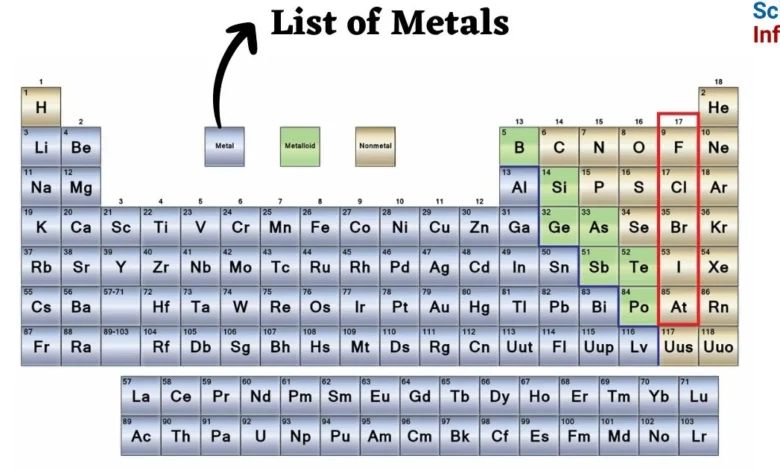Is Calcium a Metal or a Nonmetal? Detailed Explanation and Key Facts

Calcium is an essential chemical element that plays a significant role in nature, industry, and the human body. Many students and science enthusiasts often ask, is calcium a metal or a nonmetal, as its presence in both minerals and living organisms can cause confusion. Understanding its classification clarifies its properties, behaviour in chemical reactions, and practical applications, making it easier to appreciate its importance in daily life.
Despite being commonly found in rocks and bones, calcium exhibits the defining characteristics of metals. Its metallic nature is evident in its ability to conduct electricity, react vigorously with water, and form alloys with other metals. The question is calcium a metal or a nonmetal arises frequently in academic discussions, and careful examination of its properties provides a clear answer.
Understanding Calcium in the Periodic Table
Calcium is a member of the alkaline earth metals, positioned in Group 2 of the periodic table. With an atomic number of 20 and the symbol Ca, calcium is metallic by nature, exhibiting properties that distinguish it from nonmetals. Its electron configuration allows it to lose two electrons easily, forming stable ionic compounds, which is a hallmark of metallic elements rather than nonmetals.
Students often wonder, is calcium a metal or nonmetal or metalloid, due to its occurrence in mineral form. While metalloids exhibit intermediate properties, calcium consistently shows metallic characteristics such as high malleability, thermal and electrical conductivity, and shiny appearance. Its behaviour under chemical reactions further confirms that it is a metal and not a nonmetal.
Physical and Chemical Properties of Calcium
Calcium’s physical properties clearly demonstrate its metallic nature. It is a soft, silvery-white element with low density relative to other metals. It has a high melting point of 842°C and a boiling point of 1484°C, allowing it to remain solid under a wide range of conditions. Its shiny surface and ability to conduct heat and electricity are features typical of metals, not nonmetals.
Chemically, calcium reacts vigorously with water to form calcium hydroxide and hydrogen gas, and it reacts with oxygen to form calcium oxide. These reactions are characteristic of metals and further support the answer to is calcium a metal or a nonmetal. Unlike nonmetals, which often form covalent compounds and exhibit poor conductivity, calcium’s behaviour consistently aligns with metallic properties.
Calcium Compared to Nonmetals and Metalloids

Calcium is often confused with nonmetals and metalloids due to its frequent presence in minerals such as limestone and gypsum. Nonmetals like oxygen, sulfur, and nitrogen display completely different properties—they are brittle, poor conductors, and typically form covalent bonds. In contrast, calcium is malleable, a good conductor, and forms ionic compounds, confirming its metallic nature.
Metalloids, such as silicon and arsenic, have intermediate properties between metals and nonmetals. Calcium, however, lacks these intermediate characteristics. It behaves consistently as a metal in chemical reactions and physical properties, answering the question is calcium a metal or nonmetal or metalloid conclusively. This distinction is important for both chemistry students and industrial applications.
Uses and Importance of Calcium
Calcium has widespread industrial applications due to its metallic properties. It is used in steel production, as a reducing agent in metal extraction, and in the manufacturing of cement and alloys. Its metallic reactivity enables it to strengthen other metals, improve industrial processes, and produce compounds essential for construction and manufacturing.
Biologically, calcium is vital for the human body. It forms the structural component of bones and teeth in the form of calcium phosphate, helps regulate muscle function, and plays a crucial role in nerve transmission. Understanding whether calcium is a metal or nonmetal explains why it forms these stable compounds, which are essential for maintaining human health and supporting life.
Common Misconceptions About Calcium
A frequent misconception is that calcium is a mineral rather than a metal. While it is naturally found in mineral form, its elemental properties confirm its classification as a metal. Clarifying this misconception helps students correctly answer queries such as is calcium a metal or mineral and understand the difference between elemental calcium and calcium-containing minerals.
Another common confusion arises because calcium occurs in nature as part of compounds, which may lead some to believe it behaves like a nonmetal. However, pure calcium consistently shows metallic properties like conductivity, malleability, and reactivity, which clearly answers the question, is calcium a metal or a nonmetal.
Conclusion
Calcium is undeniably a metal, with distinct physical and chemical properties that separate it from nonmetals and metalloids. Its reactivity with water and acids, ability to conduct electricity, and presence in alloys highlight its metallic behaviour. Understanding whether calcium is a metal or nonmetal provides clarity in science education, industry, and daily life, making it an essential element to study.
FAQs
Is calcium a metal or nonmetal?
Calcium is a metal. Its properties, including reactivity and conductivity, confirm this classification.
Is calcium a metal or nonmetal or metalloid?
Calcium is a metal. It shows no intermediate properties like metalloids.
Is calcium a metal or a nonmetal?
Calcium is a metal. Its behaviour in chemical reactions and physical characteristics support this.
Is calcium a metal or non metal?
Calcium is a metal with classic metallic properties, such as malleability and electrical conductivity.
Is calcium a metal or non-metal?
Calcium is a metal, clearly distinguished from nonmetals by its chemical and physical behaviour.
Is calcium a metal or mineral?
While found in minerals, elemental calcium is a metal, not a mineral.
Also Read: home alarm repairs near me




